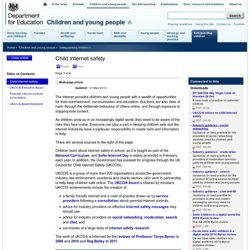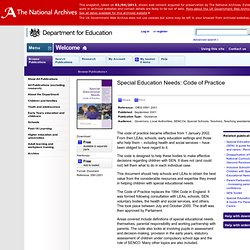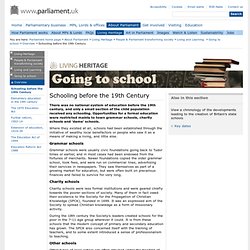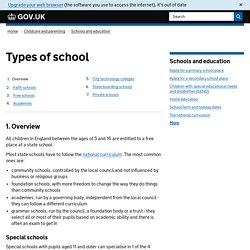

Child internet safety. The internet provides children and young people with a wealth of opportunities for their entertainment, communication and education.

But there are also risks of harm through the deliberate behaviour of others online, and through exposure to inappropriate content. As children grow up in an increasingly digital world, they need to be aware of the risks they face online. Everyone can play a part in keeping children safe and the internet industries have a particular responsibility to create tools and information to help. There are several sources to the right of this page. Children learn about internet safety in school, as it is taught as part of the National Curriculum , and Safer Internet Day is widely promoted in February each year. UKCCIS is a group of more than 200 organisations across the government, industry, law enforcement, academia and charity sectors, who work in partnership to help keep children safe online. Behaviour - In the news. Media.education.gov.uk/assets/files/pdf/e/ensuring good behaviour in schools. Find your PPS - National Parent Partnership Network. Children with special educational needs.
Statements of special educational needs say what your child’s needs are.

They are reviewed every year. You must be consulted before a statement can be changed by the council. You can appeal to the special educational needs and disability tribunal if you disagree with a change. Your local council should tell you if you’re going to get a statement within 12 weeks of starting the assessment. If the council decides not to write a statement, it will explain why and tell you how your child’s needs will be met inside or outside school.
You can appeal to the tribunal if you disagree with a statement of special educational needs. The statement initially has a blank section for you to say what school you want your child to go to (either mainstream or special), or how you want them to be educated out of school. You have 15 days to say what school (including private schools) you want your child to go to. Your local council must agree to send your child to the school you want as long as: White paper 2010 an economic impact assessment.pdf. Special Education Needs: Code of Practice. The code of practice became effective from 1 January 2002.

From then LEAs, schools, early education settings and those who help them – including health and social services – have been obliged to have regard to it. The code is designed to help these bodies to make effective decisions regarding children with SEN. It does not (and could not) tell them what to do in each individual case. This document should help schools and LEAs to obtain the best value from the considerable resources and expertise they invest in helping children with special educational needs. The Code of Practice replaces the 1994 Code in England.
Areas covered include definitions of special educational needs themselves, parental responsibility and working partnership with parents. Www.publications.parliament.uk/pa/cm200506/cmselect/cmeduski/478/478i.pdf. Department for Education. Michael Gove announcement on education funding. The Secretary of State for Education has today set out how the Government will ensure that education funding is better targeted in the future.

A copy of the statement is available to download. The key announcements are: Schools Capital The Government will provide £500 million to help local authorities provide extra school places - meeting the extra pressures caused by increased birth rates. A new school rebuilding programme has been launched. Education & Family. British Education. Schooling before the 19th Century. There was no national system of education before the 19th century, and only a small section of the child population received any schooling.

Opportunities for a formal education were restricted mainly to town grammar schools, charity schools and 'dame' schools. Where they existed at all, schools had been established through the initiative of wealthy local benefactors or people who saw it as a means of making a living, and little else. Grammar schools Grammar schools were usually civic foundations going back to Tudor times or earlier, and in most cases had been endowed from the fortunes of merchants. Newer foundations copied the older grammar school, took fees, and were run on commercial lines, advertising their services in newspapers.
Charity schools Charity schools were less formal institutions and were geared chiefly towards the poorer sections of society. During the 18th century the Society's leaders created schools for the poor in the 7-11 age group wherever it could. Types of school. All children in England between the ages of 5 and 16 are entitled to a free place at a state school.

Most state schools have to follow the national curriculum. The most common ones are: community schools, controlled by the local council and not influenced by business or religious groups foundation schools, with more freedom to change the way they do things than community schools academies, run by a governing body, independent from the local council - they can follow a different curriculum grammar schools, run by the council, a foundation body or a trust - they select all or most of their pupils based on academic ability and there is often an exam to get in Special schools with pupils aged 11 and older can specialise in 1 of the 4 areas of special educational needs: communication and interaction cognition and learning social, emotional and mental health sensory and physical needs.